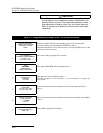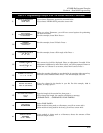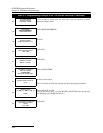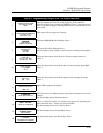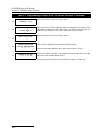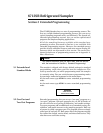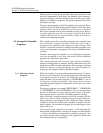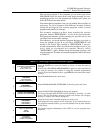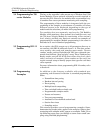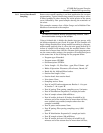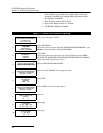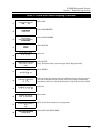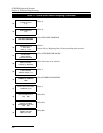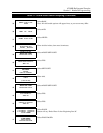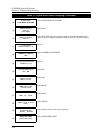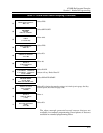
6712SR Refrigerated Sampler
Section 5 Extended Programming
5-4
5.4 Programming for 700
series Modules
The bay on the controller’s side accepts any of Teledyne Isco’s 700
Series Modules. These optional accessories are not required to
operate the 6712. However, the modules offer an economical way
to combine flow-rate or parameter monitoring with sampling.
The programming of these modules is integrated with the pro-
gramming of the sampler, so attachment of a module will cause
different screens to be displayed, depending on the type of
module and the selections you make while programming.
Two modules that are commonly used are the 730 Bubbler
Module, which monitors a flow stream’s level and flow rate, and
the 750 Area Velocity Module for monitoring a flow stream’s
level, velocity, and flow rate. Section 4 contains two examples of
programming for modules. Module programming is the same in
Extended as it was in Standard programming.
5.5 Programming SDI-12
Sondes
As an option, the 6712 accepts up to 16 parameters from up to
ten sensors with SDI-12 addresses from 0 - 9. The data param-
eters used by the sonde and sampler must match. Certain
vendors’ sondes, such as Hydrolab and YSI, have enhanced com-
mands that facilitate “plug and play” setup. These Teledyne Isco
Ready sondes can tell the 6712 what values they have, their
order, and units of measure. Other sondes can be used, but
require manual setup to identify proper data types for each data
value reported.
For more information about programming SDI-12 sondes, refer
to Section 6.
5.6 Programming
Examples
In addition to the features available with standard pro-
gramming, and discussed in Section 4, extended programming
offers:
• Nonuniform time pacing
• Random interval pacing
•Event pacing
• Multiple bottle compositing
• Time switched bottles or bottle sets
• Programmable sampler enable
• Pauses and resumes
• Two-part programming
• Automatic or user-defined suction head
• Suction line rinses
• Sampling retries
This manual provides several programming examples. Some,
demonstrating simple tasks, appear in the margins. Others, dem-
onstrating more complex tasks, appear as examples. Table 5-2 on
the following pages steps you through a storm water runoff sam-
pling using extended programming.



